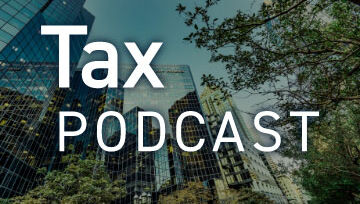As we look toward 2025, state tax credits and incentives remain crucial tools for economic development and business investment across the United States. Kentucky and Indiana, in particular, offer a range of programs designed to attract and retain businesses, enhance workforce development and stimulate economic growth.
We explore the private and negotiable state tax credits and incentives in these states, the expected changes in 2025 and their impact on site selection for businesses.
Economic Context and Trends
Recent changes in federal tariff policies have increased federal revenues, prompting Americans to migrate from high-tax, high-cost living states to more affordable alternatives. States with neutral tax structures, such as Indiana and Kentucky, have a competitive advantage in attracting businesses and residents.
Key Economic Indicators
- Indiana: Known for its low-income tax rates (individual at 3.05% and corporate at 4.9%), Indiana has frozen property tax levies, contributing to its competitive economic environment.
- Kentucky: While Kentucky offers occupational license taxes, net profit taxes and the Limited Liability Entity Tax (LLET), it does not provide bonus depreciation.
The new administration brings drastic changes to the business environment, including:
- Anticipating fluctuations in supply chain and cost structures
- Having a competitive edge over foreign-produced goods
- Lowering operating costs such as taxes, energy and other business-related expenditures
- Foreseeing labor shortage due to new immigration policies
State Tax Trends and Site Selection Impacts
Tax Cuts and Deregulation
Significant tax cuts and deregulation are anticipated, especially for industries like manufacturing and energy. These measures aim to encourage domestic and foreign companies to expand their operations within the U.S., reducing regulatory barriers and facilitating faster site selection and business expansion.
Trade Policies
The proposed trade policies, including high tariffs on imports from Canada, Mexico and China, are designed to protect U.S. manufacturing and reinforce reshoring efforts, which could lead to increased investments in the manufacturing sector.
Workforce Development
States are focusing on job creation and vocational training to develop a skilled labor workforce, which boosts local economies and influences site selection decisions.
Infrastructure Investments
Investments in logistics and transportation infrastructure, such as roads and airports, are crucial criteria for site selection, particularly in the manufacturing and distribution sectors.
Kentucky Credits and Incentives
Kentucky Business Investment (KBI) Program
The KBI Program offers income tax credits and wage assessments to new or expanding companies. Eligible projects can claim credits up to 100% of corporate income tax liability and up to 4.5% of taxable wages for up to 15 years, depending on location and project specifics. A minimum creation of 10 jobs and an investment of at least $100,000 are required.
Kentucky Enterprise Initiative Act (KEIA)
KEIA provides a refund of sales and use tax paid on building materials or eligible equipment, requiring a minimum investment of $500,000.
Kentucky Reinvestment Act (KRA)
This act offers tax credits for existing businesses investing in equipment and related costs, with eligibility requirements including a minimum of 25 full-time employees and an investment threshold of $2,500,000 for owned facilities.
New Legislative Updates
Recent legislative updates in Kentucky, such as HB524 and HB8, introduce new tax credits and programs to support rural job creation and broadband investments.
Indiana Credits and Incentives
Economic Development for a Growing Economy (EDGE) Program
EDGE offers refundable payroll tax credits up to 100% of incremental tax withholdings for new jobs, with awards spanning up to 20 years. Projects must demonstrate economic soundness and local government support.
Hoosier Business Investment Tax Credit Program (HBI)
HBI provides a credit equal to 10% of qualified investments in new jobs and capital improvements, with the credit carry-forward allowed for up to nine years.
Redevelopment Tax Credit (RTC)
The Redevelopment Tax Credit offers up to 30% of qualified investments in the redevelopment of vacant or underutilized land and buildings. An additional 5% can be added if the project qualifies for New Market Tax Credits or is near an Opportunity Zone. Eligible costs include acquisition, engineering fees, environmental remediation and more. The credit can be carried forward for up to nine years.
Skills Enhancement Fund (SEF)
The Skills Enhancement Fund provides reimbursable grants covering up to 50% of eligible training costs for upgrading the skills of employees over a two-year period. This fund supports workforce development and aims to enhance the skills of Indiana's labor force.
New Updates on Indiana’s Remote Worker Policies
Indiana has adapted to the changing work landscape with updates to its remote worker policies. The EDGE Tax Credit is now awarded even if new jobs are created without a physical Indiana location.
The Workforce Retention and Recruitment Program also allows local governments to offer incentives such as grants or loans to remote workers and recent graduates. The Headquarters Relocation Tax Credit no longer requires a minimum number of employees, providing flexibility for remote operations.
Utility Incentives
Both Kentucky and Indiana offer various utility incentives that can significantly impact businesses' operating costs. These incentives include infrastructure assistance, rate negotiations, sales tax exemptions on utilities and incentives for renewable energy projects. Businesses planning new builds or locations can maximize savings by negotiating utility agreements alongside state and local incentives.
Your Guide Forward
As businesses navigate the evolving landscape of tax credits and incentives in Kentucky and Indiana, understanding the available programs and upcoming changes is crucial for strategic planning.
Both states offer various incentives to foster economic growth, support workforce development and attract new investments. With the anticipated federal and state policy changes in 2025, companies can leverage these programs to enhance their competitive positioning and optimize site selection decisions.
The state credits and incentives programs are constantly changing, making it difficult to keep track of the criteria and reporting requirements. Cherry Bekaert’s professionals have developed strong relationships with state economic development agencies, as well as state and local governments, to stay on top of these changes.
If you have operations in any of these states, please contact a member of Cherry Bekaert’s State Credits & Incentives team for a comprehensive review to help you take advantage of these credits and incentives opportunities. By staying informed and proactively negotiating these incentives, businesses can capitalize on the opportunities presented by Kentucky and Indiana's economic development strategies, ultimately driving growth and success in the region.





